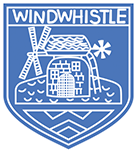Computing
We follow the National Curriculum in all year groups.
Rationale
At Windwhistle Primary School we know that computing prepares pupils to participate in a rapidly changing world in which work and other activities are increasingly transformed by access to varied and developing technology. Technology promotes initiative and independent learning, with pupils being able to make informed judgements about when and where to use technology to its best effect.
“A high-quality computing education equips pupils to use computational thinking and creativity to understand and change the world. The core of computing is computer science, in which pupils are taught the principles of information and computation, how digital systems work, and how to put this knowledge to use through programming. Building on this knowledge and understanding, pupils are equipped to use information technology to create programs, systems and a range of content. Computing also ensures that pupils become digitally literate – able to use, and express themselves and develop their ideas through, information and communication technology – at a level suitable for the future workplace and as active participants in a digital world.” National Curriculum, 2014
Computing from Year 1 – Year 6
The teaching and planning for KS1 and KS2 follows the National Centre for Computing Education (NCCE) programme of study which provides teachers with the subject knowledge and skills needed to establish Computing as a core part of the curriculum. Lesson resources, planning materials and progression frameworks have been created by subject experts, based on the latest pedagogical research and teacher feedback. Computing content (concepts, knowledge, skills, and objectives) is taught alongside online safety, in line with the Education for a Connected World framework, and other cross-curricular learning opportunities.
Curriculum Overview
|
|
Term 1 Computing systems and networks |
Term 2 Creating media |
Term 3 Programming A |
Term 4 Data and information |
Term 5 Creating media |
Term 4 Programming B |
|
Year 1 |
Technology Around Us |
Digital painting |
Moving a Robot |
Grouping Data |
Digital Writing |
Programming Animations |
|
Year 2 |
Information Technology Around Us |
Digital Photography |
Robot Algorithms |
Pictograms |
Making music |
An Introduction to Quizzes |
|
Year 3 |
Connecting Computers |
Stop-frame Animation |
Sequence in Music |
Branching Databases |
Desktop Publishing |
Events and Actions |
|
Year 4 |
The Internet |
Audio Editing |
Repetition in Shapes |
Data Logging |
Photo Editing |
Repetition in Games |
|
Year 5 |
Sharing Information |
Video Editing |
Selection in Physical Computing |
Flat-file Databases |
Vector Drawing |
Selection in Quizzes |
|
Year 6 |
Communication |
Web Page Creation |
Variables In Games |
Introduction to Spreadsheets |
3D Modelling |
Sensing |




 ↑
↑